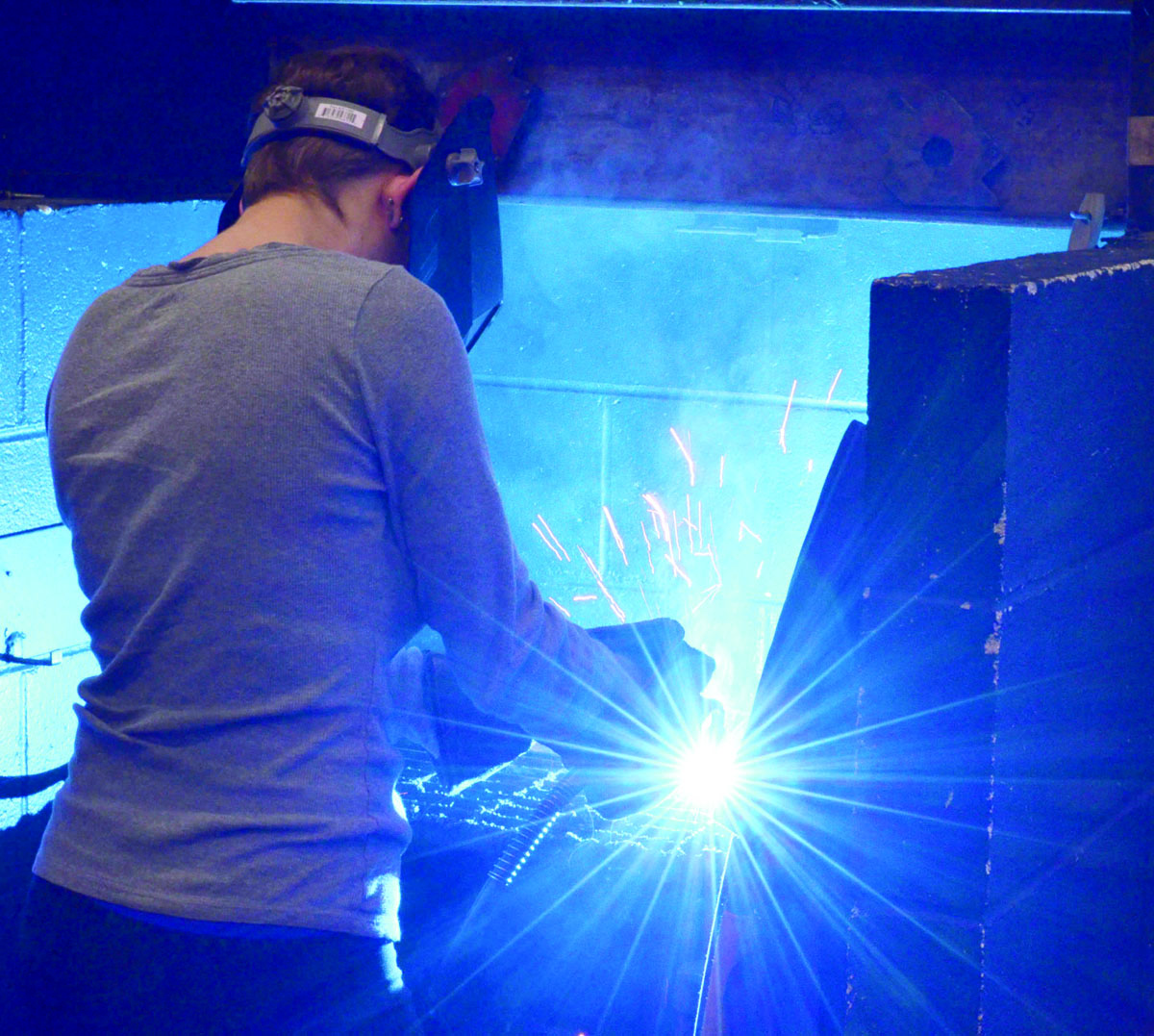
Physics, calculus and chemistry were all courses Edward Kunkel, engineering major at Johns Hopkins, enrolled in at Eleanor Roosevelt High School in Maryland. But eager to fulfill his dream of becoming an engineer and follow in his father’s footsteps, Kunkel enrolled in one more course: a specialized engineering course geared towards introducing students to the basics of the field.
Now pursuing mechanical engineering, Kunkel said if he had taken the high school engineering course without the accompanying math and science courses he took, he would not have been well-prepared for the engineering courses he is taking in college.
“In my Mechanics Based Design class, we found a complicated formula for the stress of a material and then wanted to maximize it,” said Kunkel. “The way we did it was by using just regular, run-of-the-mill calculus. But if we hadn’t taken that type of core math class, then we wouldn’t [have understood] what was happening.”
The engineering course Kunkel took in high school is similar to a new sequence of engineering classes called“Project Lead The Way,” also known as PTLW. The courses are part of an Illinois Science, Technology, Engineering and Mathematics, also known as STEM, initiative.
According to Mary Kosirog, instructional supervisor for career and life skills, interested students must begin PTLW with Introduction to Engineering and Design, the only course to be offered in the fall of the 2014-2015 school year. Kosirog said additional courses will be added during the next two years, completing the four year sequence.
Junior Aaron Charous said that application of math and physics in the engineering courses may appeal to students who are not interested in taking the core science classes senior year. However, Charous said that if he had to choose, he would rather take AP Physics over the engineering courses.
“The courses are going to be new to [Glenbrook North], so I would rather take the safer route,” said Charous. “I don’t really know what the courses entail, and an AP course, to me, seems better for college.”
According to Kosirog, the PLTW course is offered as an elective and should be taken in conjunction to the math and science core classes. Kosirog said the courses “are not meant to be in place of AP Physics or Calculus, but taken hand in hand.”
Physics teacher Jeff Jordan, who went to two full-day conferences on the course, said some of the science teachers “are a little skeptical” about the new courses as the courses follow a national curriculum.
“The GBN way… is to have more freedom,” said Jordan. “As a professional, that’s what we enjoy, being creative and being able to do our own thing.”
Kosirog believes the PLTW courses will help students understand why they are taking some classes in high school, as she remembered the first time she walked into a PLTW course at Prospect High School.
“The teacher taught, but it wasn’t necessarily like a regular classroom,” said Kosirog. “It was almost [as if] he was a facilitator like, ‘Here’s what you’re doing in math and here’s what you’re doing in science. Now let’s do a project to bring it all together.’ It seemed like a lot of students, who questioned why they were learning something in math or science had that ‘Aha!’ moment.”
Sophomore Jake Feiger enrolled in the PLTW course to “make sure that engineering is really something [he wanted] to pursue” later in college.
Alumnus David Neal (‘12) said any early exposure to the engineering field is important, as Neal switched his major from engineering to biology in his sophomore year at Johns Hopkins.
“I switched because I realized that I didn’t really like engineering,” said Neal. “I was in biomedical engineering, and I thought it had a lot more math applications than I expected, so I definitely think that an [engineering course] would help students with that type of decision early on.”
Although Kunkel would not take the engineering courses without the core science and math courses, he recalled that the specialized engineering course at his high school gave him an idea of why he wanted to pursue engineering.
“I remember one of the assignments was a group assignment, and we all had to make a piece of a four part machine,” said Kunkel. “In the end we put the files all on one computer and we put the machine together. I thought that was really great because it showed that an engineer can use [his or her] practical skills to design a machine and, for me, that sort of highlighted the benefits of what I was doing in the course.”

